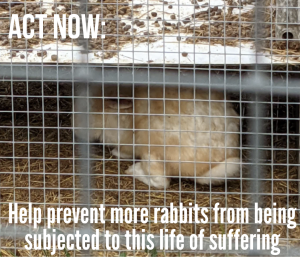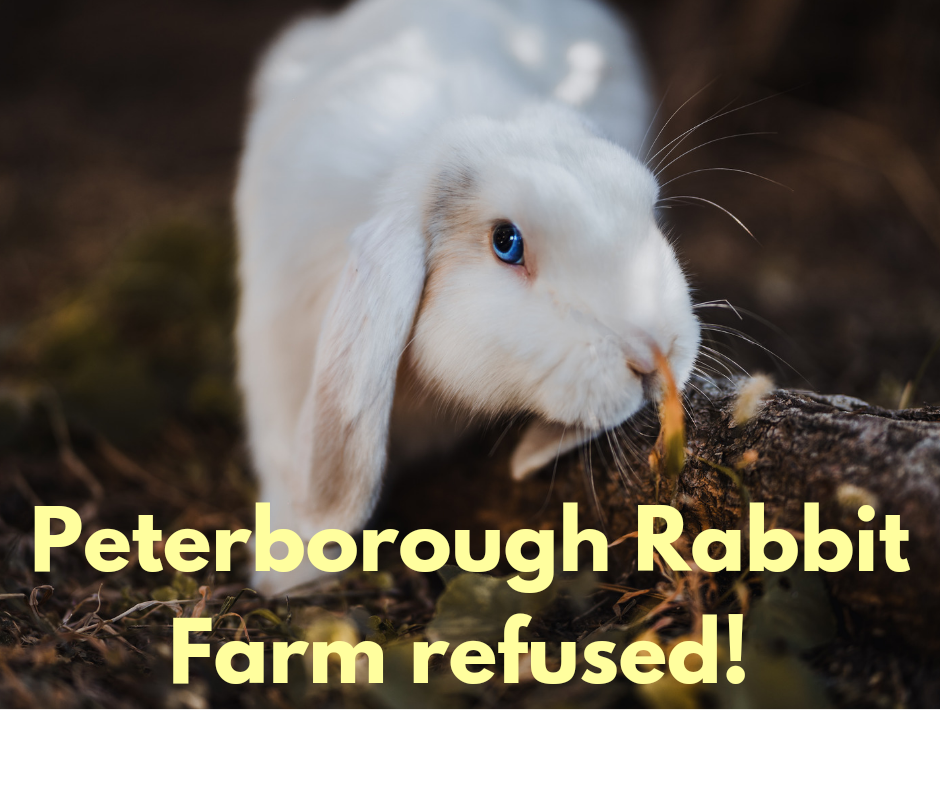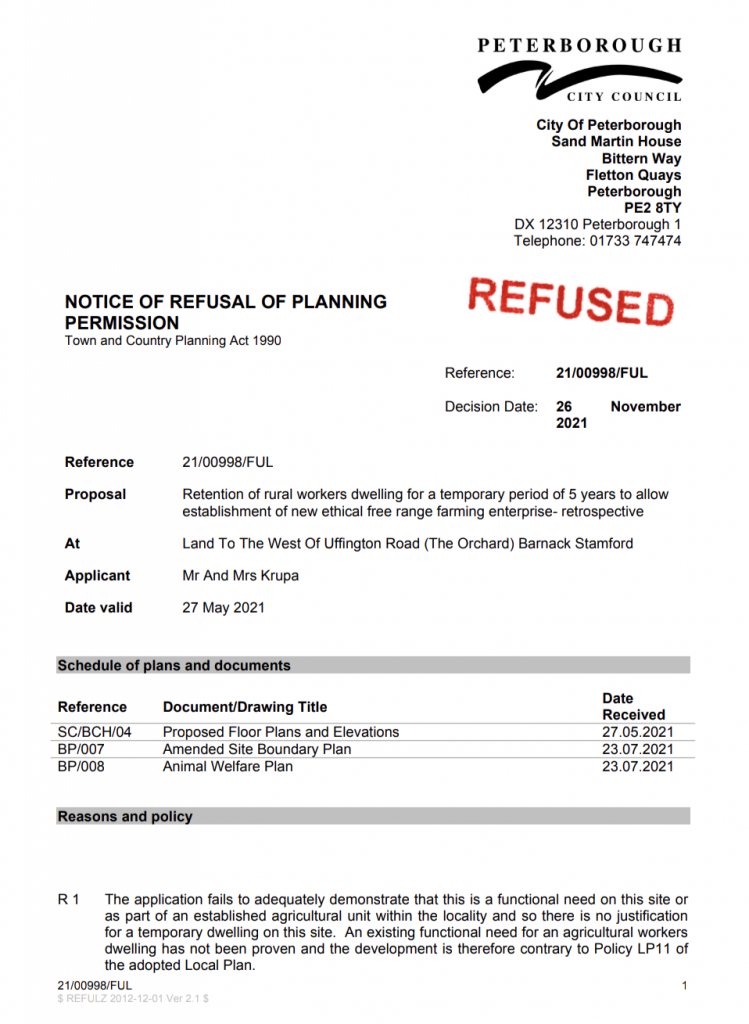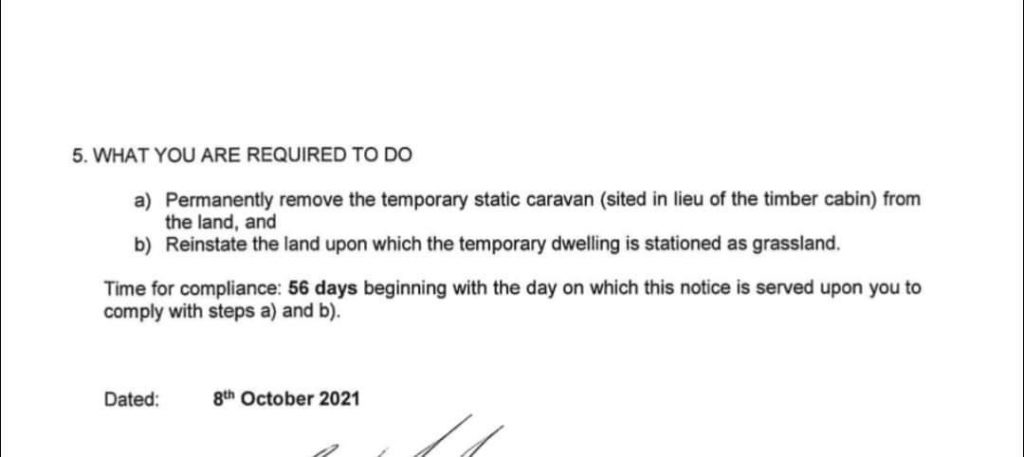Please act now⚠️
T&S have lodged their third appeal against the refusal of an expansion to their intensive rabbit farm in Derbyshire, which would include a slaughterhouse. Their plan is to exploit 250 female rabbits to produce upwards of 10,000 rabbits per year for the meat and fur industry, killing them largely unregulated on site.
The appeal can be viewed here: https://acp.planninginspectorate.gov.uk/ViewCase.aspx?Caseid=3289734&CoID=0
To send your representation online, click “Make Representation” in the top right of the page and follow the prompts on screen.
Or via email to north1@planninginspectorate.gov.uk
Include the appeal reference APP/P1045/W/21/3289734 plus your name and address in order for your representation to be valid.
Please note that all representations must be received by the Planning Inspectorate by the 18th May 2022.
All of the original points to object still stand, and we have included a few more which have become more relevant since the original application. Please feel free to use these to help you form your objection in order to make sure that your objection is considered. Remember that unfortunately, moral objections do not hold weight in planning objections, but that doesn’t mean that you shouldn’t voice your moral concerns alongside any “valid planning considerations.” Ask for welfare to be made a material consideration during review of planning permission applications involving animals, particularly as there is NO species-specific legislation protecting the welfare of rabbits in the UK.
– The proposed location is near to Carsington Water, a hugely popular tourist attraction. The construction of a rabbit slaughterhouse nearby, a point of great contention in current public attitudes, is likely to dissuade many people from visiting the area.
– In the application form, the question “Does the proposal involve the need to dispose of trade effluents or trade waste?” is answered as “no” – yet the slaughter process again creates a great deal of waste, such as blood and offal, much of which is foul-smelling – yet there is nothing in the proposal to outline how this waste will be dealt with and prevented from contaminating the local area.
– The road on which the slaughterhouse shall be accessed is a narrow lane with poor visibility, the increase in traffic and heavy goods vehicles shall surely cause issues.
– Presumably, the carcasses of rabbits are to be disposed of via waste contractor lorries, AKA “offal wagons” as outlined in previous applications from this person – another source of horrendous smells and disruptive noise.
– The elevated buildings would create significant visual harm to the immediate setting and surrounding environment. Large unsightly ‘modern’ styled buildings are not in keeping with the surrounding area, which is largely undeveloped.
– The scale of the proposed development would have an adverse impact on the character and appearance of this tranquil rural area.
– It is becoming more and more challenging for this site to be reverted back to its original state and purpose, a wildlife haven and rich pasture land.
– No ecological appraisal or impact report has been conducted for the proposed site – given the rural location, it is likely to be habitat for multiple animal and plant species, many of which may be endangered or otherwise protected. The noise and planned activity is likely to drive them away, if the plans do not destroy their homes anyway.
– The use of a rifle as ‘pest control’ 24 hours a day will present a significant safety problem, as well as a significant threat to the local wildlife population.
– There are currently no slaughterhouses in the UK licensed to slaughter rabbits. If the plan is for to be slaughtered on site, as the “intake and skinning room” on the plans suggests, there is nothing in the proposal outlining how waste from this process shall be disposed of, ie. blood and offal, nor how it will be ensured that none of this waste will contaminate the surrounding area.
– When slaughtered on-site, the rabbit meat will only be allowed by law to be sold within Derbyshire and the adjoining counties (or no further than 50 kilometres from Derbyshire’s border.) If more than 10,000 are killed a year it will contravene government regulations – so this needs close monitoring.
– There’s also the question whether ‘agricultural use’ can really stretch to include slaughtering.
– The production cap of 10,000 rabbits per year, for ‘small-scale suppliers’ means the applicant is exempt from the Food Standards Agency (FSA) rules for monitoring and reporting. Without FSA oversight with the presence of an Official Vet (OV) and CCTV monitoring in all areas where animals are present, there would be no day-to-day oversight of animal welfare, meat hygiene, food safety or safe waste disposal.
– The applicant proudly provides fur products made from the skins of their farmed rabbits. In fur production, hugely hazardous substances are used and there is no information outlining how these would be managed, disposed of and prevented from contaminating the surrounding area.
– There is no demand for rabbit meat in the UK, most people are repulsed at the thought of consuming it. As rabbit farming and killing is something which is highly frowned upon in current public attitudes, the slaughterhouse and farm would likely attract protests and unwanted attention, disrupting and upsetting locals and visitors to the popular area. Particularly given the widespread attention that the applicant’s recent farm applications to other Councils has drawn via social media and other outlets.
– If rabbits are also to be sold as “pets” as suggested by the financial information provided, which is projected to make up 10% of the farm’s income (as stated in the case officer’s report for the similar proposal placed by the applicant in Cornwall), a licence must be applied for and granted by the council in order to do this following the implementation of Lucy’s Law.
– There are no measures outlined on how they intend to combat the spread of disease in the rabbits. There are no specific drugs licensed for use in rabbits in the UK, due in large to the lack of commercial rabbit farming here. There is also no mention of vaccinating the rabbits against the fatal, incurable diseases Myxomatosis, VHD and VHD2. Myxomatosis has been noted to be rife in the local wild rabbit population by the immediate neighbours of the site. There have also been documented outbreaks of VHD2 on Mr. Kerry’s other farms.
– Animal neglect has been witnessed and documented multiple times on T&S’s existing farms, available to view online via Animal Aid, Rabbit Farm Resistance UK and articles in newspapers ie. The Independent.
– There has been huge public outcry regarding recent proposals for rabbit farms – tens of thousands have sent objections, signed petitions and attended demonstrations against them.
– There is no species-specific legislation in place to guarantee even minimum enforceable welfare standards for rabbits.
– There is a question of whether these farms are an attempt at fur farming ‘through the back door’ – the T&S website mainly advertises highly priced fur products which appear to generate the vast majority of their income. A recent yougov poll revealed that the vast majority (93%) of people in Britain don’t wear real animal fur and support a Fur Free Britain.
– Question why a modern three-bedroomed house claimed to be suitable for 5 occupants is required for the single worker who is needed to live on site. The application states no further employees will be taken on as a result of this proposal.
You can send an objection whether you objected to the original application or not, so please join in and take a few minutes out of your day to put a few words together if you are able.
For the rabbits, thank you!


 Fantastic news to share with you all this afternoon – the retrospective application for a cruel rabbit farm in Peterborough has been refused permission!
Fantastic news to share with you all this afternoon – the retrospective application for a cruel rabbit farm in Peterborough has been refused permission!
